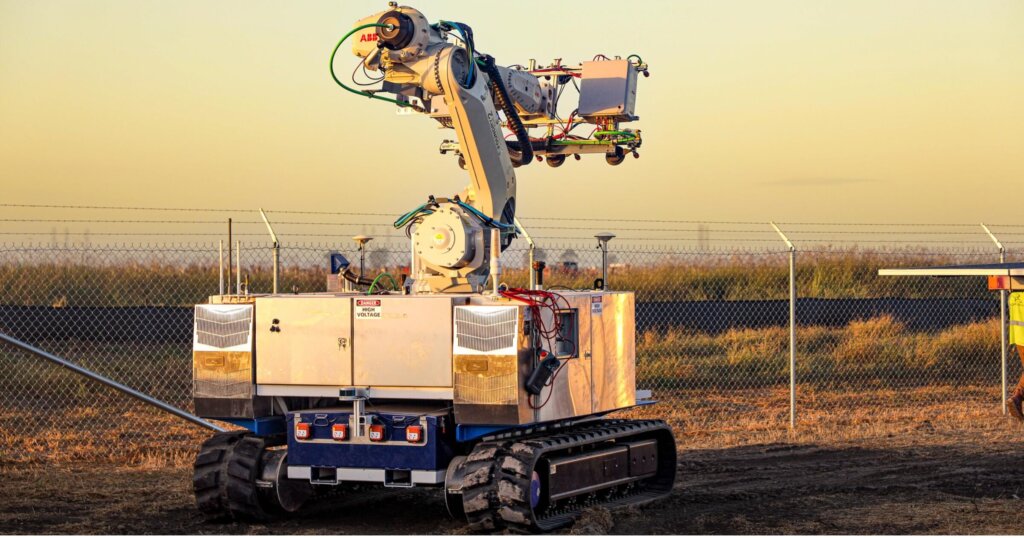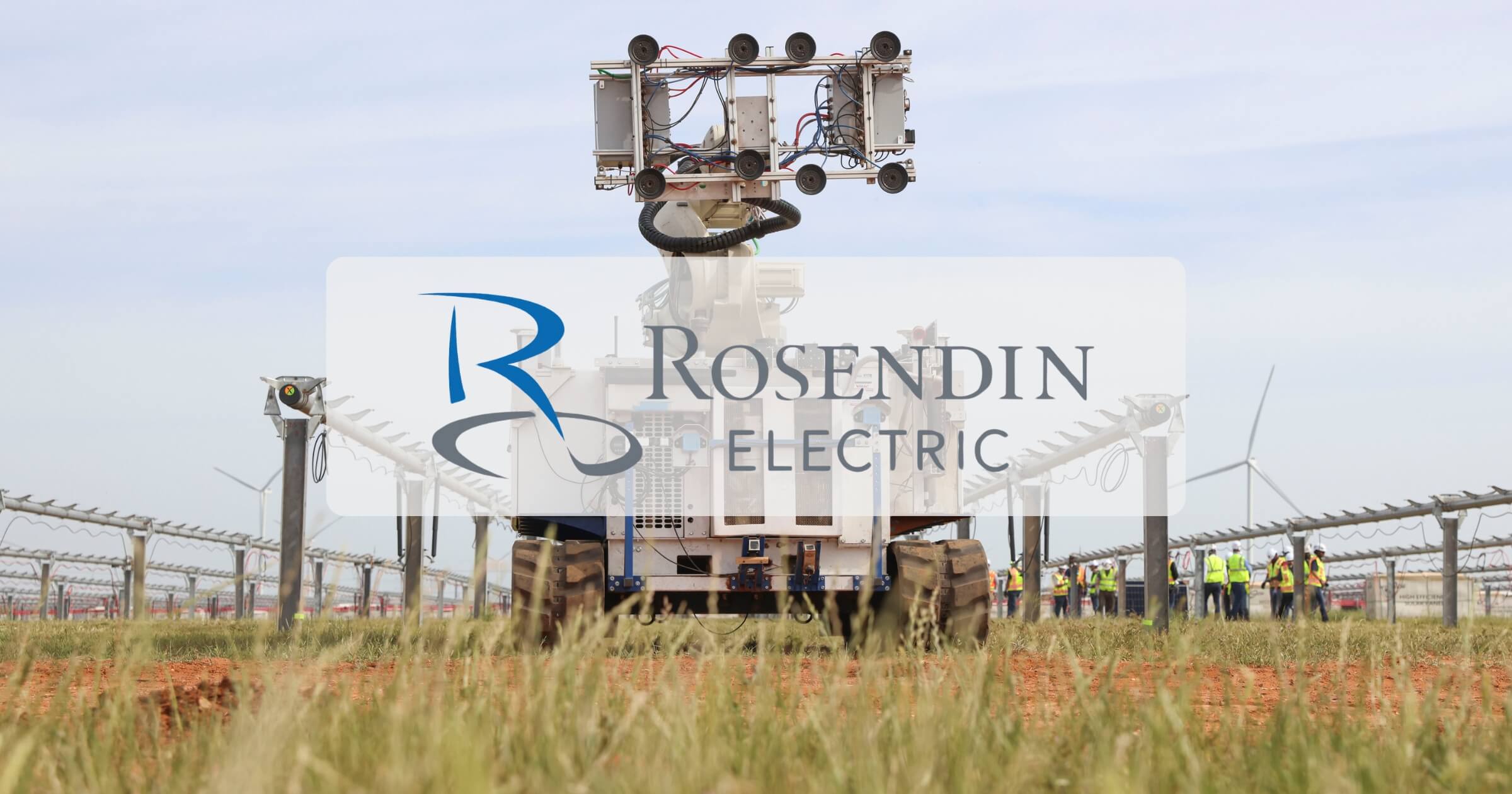As utility-scale solar farms expand across the United States, construction firms are racing to find faster, safer, and more streamlined ways to meet rising demand. In Texas, Rosendin Electric is using robotics to automate the once-manual process of solar panel installation, saving time, reducing labor strain, and increasing jobsite safety. By deploying custom-designed robotic systems on large solar projects, the company is pushing the boundaries of what’s possible in clean energy construction.

Image sourced from Rosendin Electric
Speed and scalability are significant factors in the race towards clean energy, and Rosendin Electric is stepping up to the challenge with a cutting-edge robotic solution. One of the nation’s largest electrical contractors, the company has unveiled a custom-built robot designed to automate the installation of solar panels at utility-scale job sites.
Rosendin’s solar installation robot is a purpose-built machine mounted on a modified track system. It uses robotic arms and suction systems to pick up solar modules, align them with substructures, and place them precisely. Traditionally this process required large teams of workers to install in repetitive and physically demanding roles.
The robot isn’t just high-tech; it delivers significant jobsite benefits. On average, Rosendin’s system can install up to 12 panels in the time it takes a traditional crew to install just one. That kind of speed translates directly into reduced project timelines and cost savings for large solar farms. And because the robot can work continuously without fatigue or injury, it also improves consistency and quality.
Here’s a look at how it works in the field.
Beyond speed, safety is a major factor driving the shift. Manual panel installation often involves repetitive lifting, bending, and handling of heavy materials in intense weather conditions, which can lead to common injuries and strains. Rosendin’s robot removes those risks by doing the heavy lifting itself, keeping human workers in safer supervisory and support roles. This innovation is especially valuable during labor shortages, as it reduces dependency on large on-site crews and helps offset workforce constraints.
“Automation provides a safer, faster means of deploying solar installations in locations like this,” said Rosendin Electric senior vice president David Lincoln, referring to Texas’ rough environment during a demonstration of the robotic panel installation.
For the solar industry, this robotic leap is a glimpse into a smarter future. As the U.S. ramps up investment in renewable infrastructure, utility-scale solar projects are getting bigger, faster, and more complex. Automation solutions like Rosendin’s allow companies to scale without sacrificing quality or safety.
“We’re proud to lead the way in solar construction innovation,” said Rosendin representatives in their recent demonstration video. “This robot is just one of the many tools we’re deploying to make solar energy more accessible and efficient.”
While still early in deployment, Rosendin’s robotic installer reflects a broader shift in the construction industry, where robotics and AI are being used as valuable tools for improving productivity.
Want more news on construction innovation? Subscribe to our newsletter for expert takes on the tools, tech, and trends shaping the future of construction.


